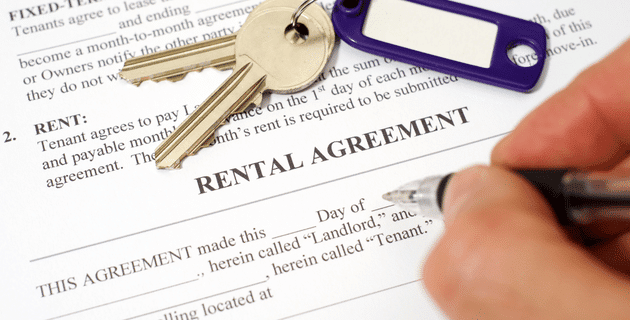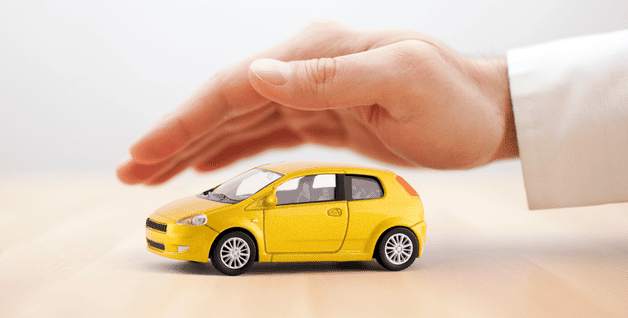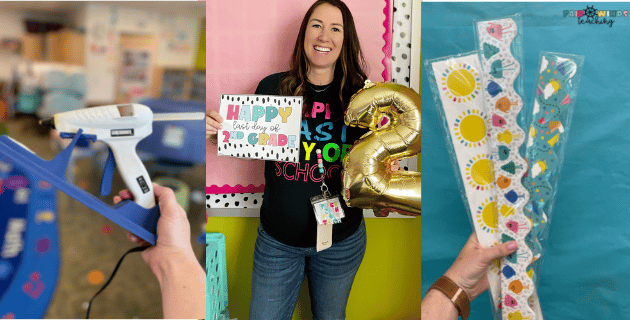
by California Casualty | Auto Insurance Info, Homeowners Insurance Info |
Do you want to save money on your insurance payments? Did you know there’s a way to do that without raising your deductible or lowering your coverage? The answer is bundling.
What is bundling? It’s a term to describe a multi-policy discount. If you have more than one policy with an insurance company, you may bundle those policies and, in the process, you can save on all.
Here’s why you might consider bundling:
-
- Bundling can save you money. Depending upon the amount of coverage for your policies, and your state, you can save from 5% to 25%.
- Bundling is convenient. It simplifies bill paying and record keeping since you interact with just one insurer.
- Bundling can help ensure you are fully covered. Having all policies with one company allows your insurance advisor to review any gaps in coverage.
There are many different ways to bundle your insurance.

Homeowner’s Insurance Bundles
Your home is one of your greatest investments; you need to make sure that it’s fully protected. There are plenty of decisions to make when buying your own policy- from coverage limits to extra protection for your belongings. One of those decisions might be to incorporate additional coverage to enhance your policy. When you bundle those with your home insurance, you can save money.
You can choose to bundle your home insurance with:
- Sump pump endorsement: A sump pump is a device that collects excess water and drains it outside your home. Sump pump coverage covers the costs of repair and replacement in the event of a sump pump failure. Just a couple inches of water backup can cause thousands of dollars in damage – ruining carpets, destroying appliances, and crumbling drywall.
- Flood insurance: Regular home insurance does not cover flood damage. That’s why many people in flood zones purchase this extra policy. There is a 30-day waiting period to buy flood insurance, so take that into consideration.
- Auto insurance: If you have a vehicle, you likely have liability, collision, and/or comprehensive insurance. Liability coverage is used to pay for damages that you cause. Collision coverage helps to pay to repair your vehicle or get one of equivalent cash value if yours is totaled. Comprehensive coverage is for damage to your vehicle other than collisions, such as natural disasters, fires, vandalism, theft, and animals that damage your vehicle.
- College students and renter’s insurance: If your college student* lives away at school, his or her belongings are covered by your homeowner’s policy at 10% of the limit of liability or $1,000, whichever is greater. You may want more coverage than 10%. Talk to your insurance advisor about expanding limits, such as an umbrella policy to cover expensive items your student is bringing to college. Alternatively, consider purchasing renter’s insurance for your college student for an off-campus apartment. Renter’s insurance not only protects your student’s possessions but offers them emergency housing if they are unable to reside in the rental unit. Renter’s insurance is surprisingly affordable, so when you bundle it with your homeowner’s, it could practically be free!
*Note that college students must meet certain requirements in order to qualify as an insured on your homeowner’s policy. This includes age limitations, family relationship, and full-time enrollment in school. In the event of theft coverage, they must have lived in the location 60 days immediately before the loss.
- Earthquake Insurance: If you live in an area that is prone to earthquakes, you may want to consider this additional coverage. Homeowner, condo, and rental insurance policies typically do not cover earthquakes.
- Umbrella policies: This type of policy provides additional personal liability insurance that starts to pay after your underlying limits of liability on your home insurance policy have been exhausted after a covered loss. While there’s no way to know for sure how much liability coverage you may need, understanding what you stand to lose is a good place to start. If you’re being sued, it’s possible that equity in your home, your personal savings, and your income may be at risk. If the value of two years of your annual income, the equity in your home, and your savings exceed the liability limits on your auto or home insurance policies, then you should consider an umbrella policy to protect your net worth.

Renter’s Insurance Bundles
Renter’s insurance is like homeowner’s insurance but for tenants. Starting at about $10 a month, it protects your personal belongings (that’s right, your landlord’s insurance policy will not cover your belongings) but that’s not all. It’s an important safeguard if you’re found at fault for property damage or injuries at your place (and even around the world). It also can help if you don’t have access to your apartment or home due to a covered loss.
You can choose to bundle your renter’s insurance with:
- Auto insurance: As described above, auto insurance helps protect you in the event of an accident or other damage to your car. When you bundle your renter’s policy with an auto policy that you already have, the savings can be substantial.
- Pet insurance: Our pets are like family and we want to keep them as healthy as possible. Pet insurance can help to offset those veterinary expenses. Depending on your policy, pet insurance may cover exams, prescriptions, lab tests and x-rays, surgeries, emergency visits, and even cancer. You make the initial payment and then are reimbursed depending upon the deductible and limits that you have selected. (Pet insurance also may be bundled with homeowner’s, too.)

Auto Insurance Bundles
Auto and homeowner’s insurance, and auto and renter’s policies, are among the most popular types of insurance bundles. However, you also may wish to bundle your car insurance with a boat policy.
- Boats and personal watercraft: If you have a boat, you will need a boat insurance policy. You also need a separate policy for personal watercraft such as jet skis. The policies protect you from vandalism, accidents, and liability for injuries to others.
*Note that motorcycle insurance is not eligible for a bundling discount. However, if you live in a cold climate state, and only ride your bike in warmer months, you can ask about seasonal coverage.
Each year, California Casualty policyholders save an average of $423* a year. That could be even more if you decide to bundle your coverages. See how much you can save and get started with a free quote today at mycalcas.com/quote.
This article is furnished by California Casualty, providing auto and home insurance to educators, law enforcement officers, firefighters, and nurses. Get a quote at 1.866.704.8614 or www.calcas.com.

by California Casualty | Educators |
Written by Casey Jeffers, Owner of Fair Winds Teaching & MSEA Second Grade Teacher Packing up your classroom at the end of the year can be exciting and also challenging at the same time. However, I promise you… if you spend some time setting yourself up for...

by California Casualty | Educators |
School’s out. That means plenty of chances for summer fun. It also means endless opportunities for screen time. If you’re wondering how you’re possibly going to manage your child’s screen time this summer, read on!
We’ve compiled 15 of the most fun activities to do at home with your kids that don’t involve screens.
1. Get in the kitchen. Give your kids a chance to mix up a batter for their favorite cookies. Or have them make pizza bagels or another fun snack. You don’t have to use a stove or oven either. There are plenty of no-bake recipes. Just be sure to supervise your children whenever they are cooking in the kitchen.
2. Put on a play. Bring down that box of old costumes, your old bridesmaids dresses, and fun props. Equip your kids with everything they need to put on a play – or a fashion show. They can even bring a favorite story to life.
3. Make a time capsule. A special way to mark the summer is to make a time capsule. Make sure to date it and include some timely items. Trace around your child’s hand for a handprint. Include packaging from your child’s favorite snack. Add an art project, an all-about-me page, photos, newspaper or magazine clipping, certificates, or anything else your child wants to add.
4. Camp in the backyard. Your backyard makes a great campground, and best of all, it’s near everything you need at home! Set up a tent, sleeping bags, and games. Prepare a picnic lunch or dinner. If you have a fire pit, try this project for natural bug bombs to keep the mosquitos away.
5. Do a backyard bug or scavenger hunt. Take an up-close look at the tiny critters in your backyard. Use this free printable bug hunt to guide you or make your own with other common items found in your backyard, like flowers or rocks. Your child can even bring a notebook and draw the bugs or objects that they see.
6. Create an obstacle course. Empty boxes, hula hoops, and even sidewalk chalk or masking tape create fun obstacle courses. Create one inside or outside using materials right at home. Jump, crawl, skip and navigate these fun courses according to your child’s rules, of course!
7. Make a weather station. Have a future meteorologist? Interest them in this craft project with a purpose. Guide them in making their own weather vane, windsock, rain gauge, and more, with materials you have right around the house.
8. Make bubbles. Sure, you could buy bubbles but it’s way more fun to make them! Try these bubble recipes. Save them for a nice day. Their sugary residue probably won’t do well indoors.
9. Learn to sew. Sewing is a skill that will help your child for years to come. If you feel your child can hold a needle safely, start them by sewing two pieces of fabric together. There also are children’s sewing projects available at craft stores.
10. Try blow art. This is a fun way to paint by blowing through straws. Start with tempera paint that is thinned with water in a bowl. Use plastic spoons or droppers to place a small drop of paint on the paper. Then have your child blow through the straw on the paint to create abstract art.
Pro Tip: To ensure young children don’t accidentally suck up paint through the straw, cut a little hole in the middle.
11. Leave chalk notes for your neighbors. Break out your favorite sidewalk chalk and get to drawing! Draw an obstacle course for dog-walkers to test out on the sidewalk or leave kind messages for you neighbors to see when they come outside.
12. Make a DIY bird feeder. You only need 4 items- cookie cutters, gelatin, bird seed, and yarn. And then kids can hang their homemade feeders in the backyard and spend the day bird watching.
13. Run a lemonade stand. Not only is a lemonade stand a fun activity, it’s a great one to learn about business. Help your child determine the costs to make the lemonade and get the cups. Then help him/her to figure out what to charge. Your child can use art skills to make a poster with prices. Your child may opt to keep the proceeds or donate to an organization in need.
Pro Tip: Check if your local community requires a permit to sell lemonade. The exact rules vary by location.
14. Rescue a frozen toy. This takes a little more preparation, but it’s something your child can help with. Choose small toys that fit into an ice cube tray. Cover them with water and then freeze them. When you’re looking to occupy your child for a few minutes, give them the frozen toy, a cup of hot water, and an eye dropper. Challenge them to rescue the frozen toy. Time them to see if they could beat their best time.
15. Make a summer bucket list. Get your kids involved with what they’ll be doing this summer. Have them make lists of movies they want to watch, books they want to read, places they want to visit, and friends they want to see. Then use the list as a guide for summer fun that doesn’t involve screens.
And for those rainy indoor summer days, check out our list of 100+ Indoor Activities for Kids that Don’t Involve Screens.
Have a great summer!
This article is furnished by California Casualty, providing auto and home insurance to educators, law enforcement officers, firefighters, and nurses. Get a quote at 1.866.704.8614 or www.calcas.com.

by California Casualty | Homeowners Insurance Info |
Looking for affordable Homeowner’s or Renter’s Insurance, but don’t know where to start?
We sat down with California Casualty Sales Team Manager Mike D. and found out all of the important questions you should be asking when you call your agent for a quote.
1. Is homeowner’s insurance required?
If you have a home mortgage, then maintaining homeowner’s insurance is generally a requirement of your loan agreement. Even if you own your home outright, it’s recommended that you protect your equity in the home by maintaining homeowner’s insurance.
2. How are homeowner’s insurance rates calculated?
While there’s no way to predict the future, home insurance providers do their best to charge a rate that’s based on both the coverage limits and the likelihood of future losses occurring.
They may consider things such as previous loss history for both the homeowner and the actual home or surrounding area, the physical characteristics of the home, the age of some critical components of the home such as the roof, plumbing, and electrical systems, and even the types of weather activity in the area.
3. What is the dwelling coverage limit and how is it calculated?
One of the most critical coverages on your policy is the Dwelling Coverage. This is the maximum amount of money your insurance provider will pay to rebuild your house. Especially in periods of economic inflation and building supply or labor shortages, the true rebuild cost of your home may be substantially higher than the market value and even much higher than the cost of building a new house on an empty lot.
If your insurance provider hasn’t recalculated the cost to rebuild your home recently, then you may be at risk of running out of coverage if you experience a total loss.
California Casualty is committed to providing policies that will truly indemnify our group members after a loss. When you speak with a California Casualty agent, he or she will have a conversation with you about the details of your home’s construction to ensure your home is protected.
4. What’s the difference between replacement cost and actual cash value?
Some components of the structure of your home and all of your Personal Property within it may be covered for either Actual Cash Value or Replacement Cost at the time of a loss.
For example, if you own a refrigerator that’s now 10 years old that originally cost $1,500 when it was new, the current market value of your fridge may now only be $500. A policy that insures your Personal Property for Actual Cash Value would only pay you $500 if your fridge is destroyed by a covered loss.
However, a policy that insures your Personal Property for Replacement Cost would pay the full amount required to replace the fridge with a reasonably equivalent new fridge.
5. What is liability coverage?
Personal liability coverage on a home insurance policy pays for damages and legal defense if you’re legally responsible for injuries to others or damage to their property. It generally follows the insured when they’re both at and away from their home.
6. When do I need an umbrella policy?
An umbrella policy provides additional personal liability insurance that starts to pay after your underlying limits of liability on your home insurance policy have been exhausted after a covered loss.
While there’s no way to know for sure how much liability coverage you may need, understanding what you stand to lose is a good place to start. If you’re being sued, it’s possible that equity in your home, your personal savings, and your income may be at risk. If the value of two years of your annual income, the equity in your home, and your savings exceed the liability limits on your auto or home insurance policies, then you should consider an umbrella policy to protect your net worth.
7. What should I set my deductible at?
There’s no single right answer. Generally, the higher your deductible, the lower the cost of your insurance premium. Since the deductible is the amount your insurance provider will subtract from an insurance payout, you’ll have to select a deductible that you’re comfortable paying out-of-pocket after a loss.
There can be diminishing returns if you set your deductible much higher than average, so as a consumer, you need to balance the premium savings against the amount you’d be required to pay after a loss.
8. What are endorsements, and how do they affect my policy?
Endorsements modify your coverage, meaning they may increase or decrease your coverage. They may also remove restrictions to your coverage or add restrictions to your coverage.
For example, at California Casualty we provide coverage enhancements to our group members that are tailored to their needs based on occupation or professional association. However, some companies only offer a standard suite of options for home insurance commodifying the product.
9. Is homeowner’s insurance tax-deductible?
Home insurance is not tax-deductible on your primary dwelling. However, home insurance may be tax-deductible for rental properties.
10. What natural disasters does homeowner’s insurance typically not cover?
Some of the more notable natural disasters that homeowner’s insurance typically does not cover include flood and earth movement (for example earthquakes, landslides, mudslides, etc.). Typically flood and earth movement must be added independently.
11. Do I need flood insurance? Do I need earthquake insurance?
Flood Insurance may be required depending on the requirements of your home mortgage. Earthquake Insurance isn’t generally required but is recommended if you live in an area where earth movement is more prevalent.
12. Do I need extra coverage for my home-based business?
Most home insurance policies have restrictions for losses related to a home-based business. It’s important to speak with your agent about the nature of your business in order for them to determine what coverage options are available.
13. Should I increase my coverage when I make updates to my house?
Generally, home updates increase the rebuild cost of your home. Since it’s the job of the insurance provider to have enough coverage to rebuild your home after a total loss, you should discuss anything that may increase the rebuild cost of your home with your home insurance agent.
14. What’s the easiest way to reduce my monthly premium?
Keep in mind that in some cases the premium is inversely related to the quality of service and coverage you can expect to receive from an insurance provider. With that being said, the easiest way to reduce your monthly home insurance premium is generally to increase your deductible. But as mentioned above, there may be diminishing returns on premium reduction, the higher you go with your deductible.
15. Am I eligible for any discounts?
It’s rare that a customer and their home would be ineligible for all discounts. If you’re eligible for a discount, then your agent should have proactively explored those options with you to provide you with the best price possible from your first day as a customer. Talk to your agent and ask what discounts you may qualify for.
If your agent confirms that you’re receiving all discounts available, but you still feel that your insurance rates are too high, reach out to California Casualty to see if you can get more for your money with your policy.
This article is furnished by California Casualty, providing auto and home insurance to educators, law enforcement officers, firefighters, and nurses. Get a quote at 1.866.704.8614 or www.calcas.com.

by California Casualty | Homeowners Insurance Info |
Who doesn’t love a sunny day? …But when those beautiful rays shine down on your home, you might not love what happens; from faded furniture to deteriorating roof shingles, the sun’s ultraviolet (UV) rays can cause quite a bit of damage over time.
UV rays happen even on a cloudy day, and just as we wear sunscreen to protect our skin, we need to take action to protect our homes.
Here’s what you can do.
Use window shades.
Regular window glass only blocks a portion of those damaging UV rays. Using window shades can help. Invest in solar shades designed to block UV rays and still let in light. These shades are rated by percentage in terms of how much light they block. A 1% shade has a tighter weave and blocks 99% of UV rays. By contrast, a 14% shade blocks just 86%.
Apply window films.
Whether or not you use window shades, you can protect your home from light with window films. These translucent vinyl or polyester strips will cling to window glass, and chances are you won’t even notice them. Plus, they can block 99 percent of UV rays! You can get them professionally installed or do it yourself (DIY). Just know that over time, these films might become scratched or damaged and will need to be replaced.
Replace your window screens.
You may have window screens that are there to prevent bugs from entering your home. Replace them with ones that also block or filter harmful UV rays. That way, if you open a window, the screen is there as a barrier.
Install tinted windows.
A more expensive option is to replace your window glass with low emissivity (low-e) glass. This type of glass protects against UV rays due to its special coating. It also helps insulate your home so your rooms stay warmer in winter and cooler in summer.
Rearrange your furniture. Cover your floors.
A little redecorating can help to protect your furniture and floors. If your couch is in the direct path of sunlight from the window, consider moving it to a shadier spot. Try a slipcover, which can be more easily replaced than a couch when it fades. Similarly, you can cover sunny spots on the floor with area rugs and replace them as needed.
Choose the right fabrics and colors.
Lighter colors show the effects of fading less than darker ones, especially on those outdoor furniture cushions. Some fabrics also wear better. When choosing furniture or fabrics for your home, look for synthetic blends. Nylon and polyester will fade more slowly than cotton.
Spray your furniture and treat your floors.
Hardwood is very sensitive to sunlight but may be treated with stains and finishes that have UV protection. For furniture, consider UV protection sprays. Reapply every 6 months or so. If you have leather furniture, you can apply a leather conditioner to help prevent fading and cracking. You can treat your furniture and floors even after fading begins. It won’t take the fading away but it will help slow the process for the future.
Protect your artwork.
Artwork and photos also can fade over time. Canvases may be treated with UV protection sprays. For framed art, replace the glass with UV-blocking acrylic or the pricier museum-grade glass.
Protect your siding.
Older house siding can actually melt or warp when windows from your neighbor’s home focus sunlight on a small portion of your home’s siding. Protect against this by planting trees and shrubs, which also add more shade to your landscape. You can also buy products that put a coating on your siding to help protect it. If you’re ready to redo your siding, choose one that reflects harmful UV rays away from your home. Not only will it help prevent fading, but it will also keep your home cooler.
Repaint with UV-resistant products.
The paint or stain on your deck, front door, and shutters can fade over time. Repaint using a product that helps resist UV exposure. Check with your local home improvement or hardware store for options.
Treat your roof.
The sun’s rays beat down on your roof, causing shingles to deteriorate. Over time, UV rays dry out the natural oils in your asphalt shingles, and can even crack or weaken the roof underneath. To protect against this, there are special coatings that you can apply. Get a professional to do it if you’re not comfortable working on your roof. The coating will create a waterproof barrier to reflect light, draw heat away and keep the surface cooler. Such coatings generally last about 10 years.
Your home is your greatest investment. Review the impact UV rays are making as part of your regular summer home maintenance. Protect your home with the right homeowner’s insurance, and you’ll continue to enjoy it for years to come.
This article is furnished by California Casualty, providing auto and home insurance to educators, law enforcement officers, firefighters, and nurses. Get a quote at 1.866.704.8614 or www.calcas.com.








